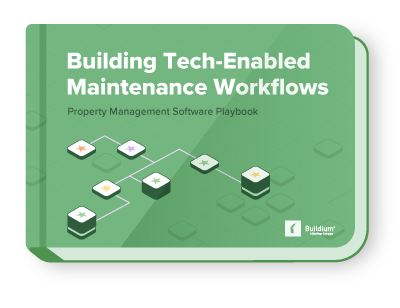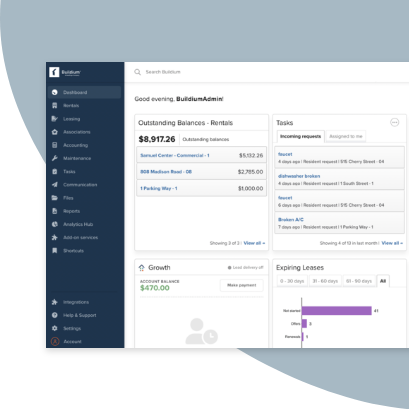Disclaimer: This blog post is meant for informational purposes only and does not constitute legal advice. Consult with a licensed attorney in Maryland for specific legal guidance.
Maryland’s real estate landscape, from the bustling streets of Baltimore to the serene shores of Chesapeake Bay, offers a diverse range of opportunities for property managers, owners, and tenants. However, to capitalize on these opportunities, property managers need a clear and legal lease agreement. These agreements serve as the backbone of any rental arrangement, providing clarity, legal protection, and a structured framework for disputes.
In this guide, we’ll explore what constitutes a Maryland lease agreement, who requires one, the different types available in the state, and all the components of the document and legal specifics you should know.
We also have a free Maryland lease agreement template available via the “Download Sample Form” button above to help you get started.

What Is a Maryland Lease Agreement?
The Maryland lease agreement acts as a binding accord establishing the terms between an owner and tenant for the use of a specific property. Both parties agree to adhere to and honor the outlined terms for the duration of the lease. It provides a lucid blueprint, helping all participants understand their duties.
Should conflicts arise, this agreement becomes a point of reference. It operates as a legal safeguard, upholding both the owner’s, property manager’s, and tenant’s rights and interests. Should any party neglect their obligations, the affected party has the right to pursue legal recourse.
Who Needs a Maryland Lease Agreement?
A Maryland lease agreement benefits:
Owners/Property Managers: Whether you manage a single-family home, a duplex, or a multi-unit apartment complex, having a lease agreement protects you. It sets clear expectations about rent, property care, and tenant behavior, reducing the potential for disputes.
Tenants: Tenants need this document to understand their rights and responsibilities. It provides them with a clear framework of what they’re entitled to, what they owe, and how they’re expected to treat the rental property.
Real Estate Agents/Brokers/ Other Real Estate Professionals: Professionals involved in renting out properties on behalf of owners should put a legally compliant lease agreement in place. This protects both their interests and their clients’ interests.
Types of Maryland Lease Agreements
Depending on the needs of owners and tenants, different types of lease agreements should be drafted:
- Standard Annual Lease: This is the most common type of lease, typically lasting 12 months. Both parties are locked into the agreement for the duration unless specific termination clauses are triggered.
- Month-to-Month Lease: This lease term offers more flexibility. Typically, either party can terminate the lease with a 30-day notice. This type is ideal for tenants uncertain about their long-term plans and owners who might be considering selling or otherwise repurposing their property soon.
- Sublease Agreement: This type of agreement allows the original tenant to rent out the property (or a part of it) to a third party. It’s essential that the primary lease agreement does not prohibit subletting.
- Room Rental (Roommate) Agreement: Ideal for situations where multiple unrelated tenants are renting different rooms in a single property. This agreement outlines each tenant’s rights and responsibilities.
- Commercial Lease Agreement: Specifically designed for business purposes, this type is used when renting out space for offices, retail, or other commercial activities.
What Should a Maryland Lease Agreement Include?
Any effective Maryland lease agreement contains several elements. Double check that all the sections below are clearly outlined in your own agreements:
Parties Involved
At the core of any lease agreement are the parties involved. They typically fall into two buckets:
- Owner/Property Manager: State the full name of the owner or the legal entity that owns the property. If a property management company is acting on behalf of the owner, its name and contact information should be included.
- Tenants: Include the full legal names of all adults who will be residing at the property. This confirms that each named individual is legally responsible for the terms stated in the agreement.
Lease Duration Dates
Define the start and end dates of your lease terms. For a fixed-term lease, specify the exact commencement and termination dates (typically 12 months). For a month-to-month lease, just be sure to indicate the commencement date and reiterate that the lease is on a monthly basis.
For leases with fixed end dates, tenants are not required to provide written notice, since the lease expires automatically. Month-to-month leases require one month’s notice and week-to-week leases require one week’s notice.
Rent and Security Deposit Information
Specify the monthly rent amount and the due date. It’s also wise to mention acceptable payment methods and where/how payments should be made.
Maryland law restricts security deposits to a maximum of two months’ rent. Clearly outline the amount taken, its purpose, conditions under which deductions can be made, and the return process.
Occupancy Limits
Specifying who can reside in the rental unit helps you to maintain control over your property. These may include:
-Named Tenants: Only those whose names appear on the lease should reside in the property. This keeps each occupant accountable for adhering to the lease terms.
-Guests: Define a policy on how long guests can stay without requiring notification or approval. This avoids the unofficial addition of long-term occupants.
Property Management Company and Tenant Responsibilities
A clear division of responsibilities avoids disputes. Here are a few particularly important areas to focus on in your lease agreement:
-Maintenance: Indicate who is responsible for tasks such as lawn care, snow removal, and minor repairs. Typically, significant repairs and maintenance are the responsibility of the property manager or owner.
-Utilities: Specify which utilities (e.g., water, electricity, gas) are included in the rent and which ones are the tenant’s responsibility.
-Rules and Conduct: Lay out specific guidelines on noise levels, nuisances, and any other behavioral expectations.
Pet Policies
Pets can be a contentious point in rental agreements, so be clear about your pet policy from the start. You should first state whether pets are allowed. If they are, specify the types and any breed or size restrictions.
If applicable, detail any additional deposits or monthly fees for tenants with pets. Note that in Maryland, pet deposits are considered part of the security deposit and therefore, the total of standard and pet deposits should not exceed two months’ rent.
In the lease, reiterate to tenants that they’re responsible for their pets’ behavior, potential damages, and any disturbances.
Maryland Lease Agreement Addenda and Disclosures
Beyond the basic lease document, there are specific disclosures and addenda that are often required by law or beneficial to include.
Here’s a detailed look into these essential components. This list is not exhaustive, so consult a legal professional if you’re unsure about what to include in your own agreements.
Lead-Based Paint Disclosure
The dangers of lead-based paint have been well-documented, which is why federal law mandates specific disclosures for older properties.
Rental properties built before 1978 are required to disclose the presence or potential presence of lead-based paint. Owners must:
- Provide tenants with an EPA-approved information pamphlet on lead-based paint.
- Disclose any known lead-based paint or related hazards on the property.
- Include specific warning language in the lease regarding lead-based paint.
- Provide tenants with any available reports or records related to lead hazards.
Optional Disclosures & Addenda
Though not always mandated by law, several disclosures and addenda can protect both property managers and tenants. Here are some additional stipulations to consider:
Asbestos Disclosure: If the property has known asbestos or if asbestos remediation has been conducted, it’s wise to inform tenants. Asbestos, like lead, poses health risks.
Mold Disclosure: Given the potential health hazards associated with certain types of mold, a mold disclosure can be important, especially if the property has had previous issues.
Pest Control Programs: If there are regular pest control treatments or if the property has had past issues with pests (e.g., bedbugs or termites), an addendum can inform tenants of schedules or precautions.
Move-In Checklist: While not mandatory, a move-in checklist where both the owner and tenant document the condition of the property can be invaluable. It offers protection for both parties when it comes to potential security deposit disputes.
Consequences for Not Including Mandatory Disclosures
The repercussions of omitting mandatory disclosures can be significant, including:
Fines and Penalties: Owners that don’t make the proper disclosures in their agreements are subject to fines penalties. For example, owners who fail to comply with the lead-based paint disclosure requirements may face fines under federal law.
Lease Termination: In some cases, the omission of a mandatory disclosure can provide grounds for the tenant to terminate the lease without penalty.
Liability for Damages: If a tenant suffers harm or financial loss due to non-disclosed information (e.g., health issues from lead-based paint exposure), the owner could be held financially responsible.
Loss of Trust: Beyond the legal and financial ramifications, failing to disclose necessary information can erode trust. This can affect the owner’s reputation and make it difficult to retain or attract tenants in the future.
Maryland Lease Agreement Laws and Regulations
There are several laws pertaining to Maryland lease agreements that you should be aware of. Here’s an overview of what to look out for:
Security Deposits
In Maryland, the rules surrounding security deposits are particularly stringent to protect both owners and tenants. It’s important to consult these regulations and be well versed in them before requesting or handling any security deposits.
Right of Entry
Regarding an owner’s right of entry, it is considered best practice to provide at least 24 hours’ notice. Owners are typically allowed entry for reasons such as performing repairs, conducting inspections, or showing the property to prospective tenants or buyers. Emergencies, where immediate access is necessary, are often an exception, but be sure to consult your local laws for the most current and specific requirements.
Grace Period and Late Fees
Understanding grace periods and late fees can help with everything from managing cash flow to maintaining good relationships with tenants.
Maryland does not have a state-mandated grace period for rent payments. Any grace period should be explicitly stated in the lease agreement. There are also specific caps for late fees and how they can be charged.

Taking the Next Steps with Your Maryland Lease Agreement
Maryland’s rental landscape offers myriad opportunities for both property managers and tenants. However, the foundation of any successful and smooth rental experience is a comprehensive, clear, and understandable lease agreement.
By understanding the nuances of Maryland’s lease agreements, property managers can foster a harmonious owner-tenant relationship, minimize disputes, and keep their operations running seamlessly.
To take the next step in creating and customizing your own leases, download our free Maryland sample lease agreement template using the “Download Sample Form” button above.


